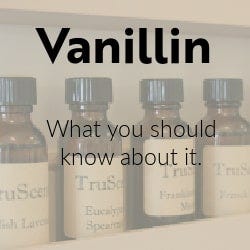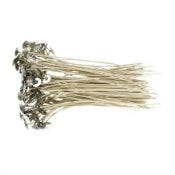
Fragrance Oils and Prop 65
Updated April 2024
Although Proposition 65 (Prop 65) has been getting increased attention over the last few years in the candle fragrance industry, the initiative – Safe Drinking Water and Toxic Enforcement Act of 1986 – has been around for quite a while. We felt it would be helpful to share insights on fragrance oils and Prop 65 so that you can better understand the relevance.
Many of our TruScent fragrances are safe for use in a variety of personal care formulations as well as for candle making. Most of our fragrances to not require Prop 65 warnings, but for any products that do, there are many misconceptions about what that label really means, and the source of the requirement.
What does Prop 65 require?
Prop 65 required businesses to notify California residents about significant amounts of chemicals in the products they may purchase or that are released into the environment. The idea is that by providing this information, Prop 65 enables Californians to make informed decisions about protecting themselves from exposure to these chemicals. Learn more details about Prop 65. What does that mean for you? If you use products that contain items on the list at certain levels, you must include the Prop 65 warning. Get even more details on OEHHA’s Proposition 65 program here.
Where can I find Prop 65 information about TruScent fragrance oils?
More recently, we began the process of adding a field to the chart on our fragrance description page that addresses whether of not the formulation contains a compound that requires a Prop 65 warning so that you don’t need to digest the SDS, IFRA documents to locate that status. Since our desire is for our fragrances to the phthalate free and free of Prop 65 flags, most of our fragrances do not require those warnings. However, there are actually many natural sources of some of these Prop 65 compounds. You’ll find that the majority of sources for our oils are identified as “natural indirect source”. This means that there is a compound present, but the source of that compound is from a natural ingredient. Myrcene is just one example. It is found in Peppermint essential oils, but it must still be identified as a Prop 65 compound. So, all of the fragrances that contain essential oil of peppermint get a Prop 65.
Below is a list of common Prop 65 Compounds used in fragrance formulations and the natural sources of those compounds.
Methylene Eugenol
BASIL OIL, YLANG YLANG II OIL, CINNAMON LEAF OIL, PIMENTO BERRY OIL, ELEMI OIL, PIMENTO LEAF OIL, ANISE SEED OIL, CLOVE LEAF OIL, PARSLEY HERB OIL, ROSEMARY OIL, MACE OIL, LAUREL LEAF OIL, BAY OIL 50/55
Methylene Chloride
CINNAMON OLEORESIN
Pulegone
PEPPERMINT OIL, PENNYROYAL OIL, BUCHU OIL, CORNMINT OIL
Styrene
CINNAMON BARK OIL – SRI LANKA, CINNAMON LEAF OIL F.C.C., CASSIA OIL, HYRACEUM ABS DIPG
Safrole
CINNAMON BARK OIL, CINNAMON LEAF OIL, MACE OIL, NUTMEG OIL
Myrcene
ANISE SEED OIL, ARMOISE OIL BEL, BASIL OIL, BAY OIL INDIAN, CALAMUS OIL, CAMPHOR OIL CHINESE, CARROT SEED OIL INDIA, CEDARLEAF OIL, CHAMOMILE OIL WILD, CINNAMON BARK OIL, CINNAMON LEAF OIL, CITRONELLA OIL, CLARY SAGE OIL, CORIANDER SEED OIL, CORNMINT OIL REDISTILLED, DILLWEED OIL, ELEMI OIL, EUCALYPTUS OIL, FENNEL OIL, FIR NEEDLE OIL CANADIAN, FIR NEEDLE OIL SIBERIAN, GINGER OIL, GINGER OIL, GRAPEFRUIT OIL, HELICHRYSUM ITALICUM OIL, HOP OIL, LAVANDIN ABRIALIS OIL, LAVENDER OIL, LEMON OIL, LEMONGRASS OIL, LIME OIL, MACE OIL, MANDARIN OIL ITALIAN, MARJORAM OIL SPANISH, NUTMEG TERPENES, OLIBANUM RESOID, ORANGE OIL, PETITGRAIN OIL, PALMAROSA OIL, PARSLEY HERB OIL, PARSLEY SEED OIL, PEPPERMINT OIL, PIMENTO BERRY OIL, PIMENTO LEAF OIL, PINE OIL, PIPERITA TERPENES, ROSEMARY OIL, ROSEWOOD OIL NATURAL, SAGE OIL, SPEARMINT OIL, SPEARMINT TERPENES, TANGERINE OIL, TANSY OIL, THYME OIL, TURPENTINE, YLANG YLANG OIL
Fillmore Container has been requesting SDS (Safety Data Sheet) for each of our fragrances and making them available to our customers for years. Until recently, these documents were called MSDS. These SDS’s are available digitally in the “Product Attachments” tab of each TruScent Fragrance Oil. (Some of the file names still say MSDS, but this is the document you want.) The statement as related to Prop 65 can be found in “Section 15.3 US State regulations”.
What is the IFRA?
The other product attachment is the IFRA – which is another very important and helpful document that provides valuable handling & application guidelines. See our Understanding the IFRA Certificate post to learn more.












1 Comment